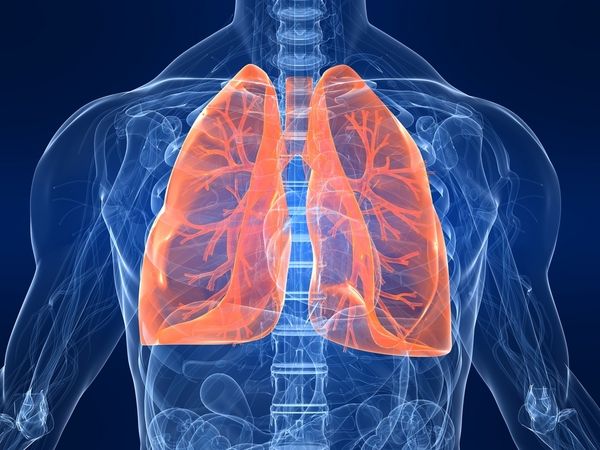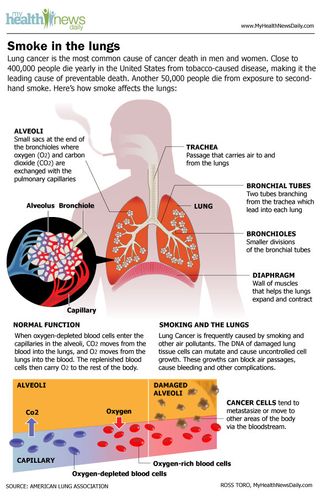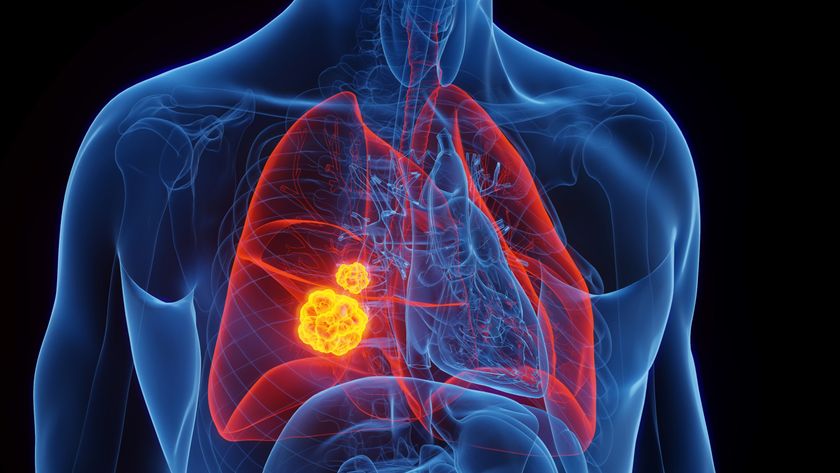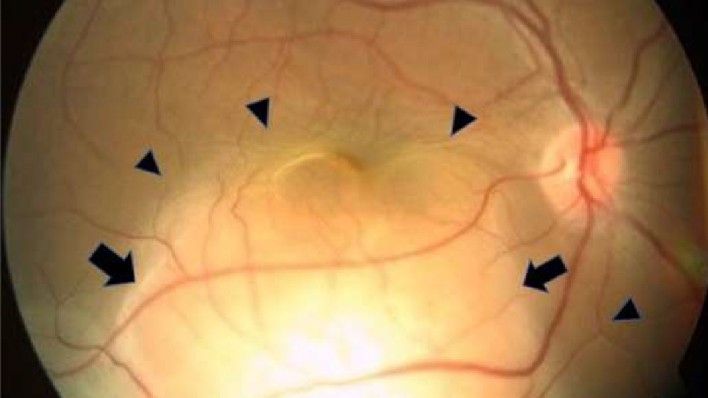Lung Cancer: Signs, Symptoms, Types & Treatment

Lung cancer is the deadliest type of cancer for both men and women, and the number of deaths each year is increasing. Deaths due to lung cancer increased approximately 3.5 percent between 1999 and 2012, according to the National Lung Association.
About 158,040 Americans are expected to die of lung cancer in 2015, according to the National Lung Association. From the time of diagnosis, between 11 and 15 percent of those afflicted with lung cancer will live beyond five years, depending upon demographic factors, according to the Environmental Protection Agency (EPA).
Causes
Smoking is the No. 1 cause of lung cancer, according to the American Lung Association. Even being near those who smoke can be dangerous. "Second-hand tobacco smoke exposure has been linked to lung cancer, with the extent of exposure determining the associated risk," said Dr. Megan Baumgart, an assistant professor in the department of medicine, hematology/oncology at the Wilmot Cancer Institute in Rochester, New York. "In general, people living in a home with a smoker or exposed to smoking in the workplace are at 20 to 30 percent increased risk of developing lung cancer compared to those who do not."
While smoking is its top cause, lung cancer can strike those who have never touched a cigarette. For example, radon, a radioactive gas found in homes and businesses, can cause lung cancer. In fact, radon is the No. 1 cause of lung cancer among non-smokers, according to the EPA. "Radon has been associated with an increase in risk for development of lung cancer, though this remains controversial. Other risk factors include prior radiation treatment to the chest or damage to the lungs from an underlying inflammatory pulmonary disease such as pulmonary fibrosis or alpha-1 antitrypsin deficiency," Baumgart said.
Other culprits may be air pollution and inflammation. "There’s been lots of research of late indicating that people are developing non-smoking related lung cancer with frightening increased incidence," Dr. Mitchell Gaynor, an oncologist in New York City and author of "The Gene Therapy Plan" (Viking, 2015), told Live Science.
"This could be caused by pollution coupled with the body’s inability to detoxify these carcinogens," he said. "Inflammation turns on tumor-promoting genes and increases insulin-like growth factor, interleukin six, and activating protein one, all of which promote the development of lung cancer. The major promoters of inflammation and obesity are white bread and sugar laden diets common in America."
Genetics may also play a role in the development of lung cancer, according to the National Cancer Institute (NCI). "The role of genetics and family history in the development of lung cancer is not well understood, but the risk appears highest for those with relatives diagnosed at a young age and in those with multiple family members diagnosed with lung cancer,” Baumgart said.
Types of lung cancer
Lung cancer, also called pulmonary carcinoma, is divided into three main categories. Non-small cell lung cancer is a variety that encompasses several similar sub-types, including adenocarcinoma, squamous cell carcinoma and large cell carcinoma. This type is the most common, accounting for 85 percent of lung cancers, according to the American Cancer Society (ACS). Small cell lung cancer comprises about 10 percent to 15 percent of all cases and is a fast-growing form of lung cancer, according to the ACS. Lung carcinoid tumors are rare, grow very slowly and usually do not spread.
Cases that include both main types are called mixed small cell/large cell lung cancer, according to the National Institutes of Health (NIH).
Additionally, a highly lethal form of cancer called mesothelioma most often arises in the tissue surrounding the lungs. Mesothelioma primarily afflicts those who have been exposed to asbestos, a mineral used in insulation, brakes, flooring and many other goods, according to the Mayo Clinic.
Symptoms and signs
Early lung cancer is usually symptomless, according to the Mayo Clinic. Lung cancer symptoms also resemble those of many other conditions, making it hard to discern the cause.
As the condition progresses, certain symptoms may arise. According to the Cleveland Clinic, these symptoms include:
- Persistent, prolonged cough
- Coughing up blood
- Wheezing and shortness of breath
- Chest pain
- Appetite loss
- Hoarseness
- Unexplainable weight loss
- Fatigue or weakness
- Difficulty swallowing
Diagnosis and tests
Using a stethoscope, doctors sometimes can hear fluid around the lungs, which may suggest lung cancer. But definitively diagnosing it usually involves a combination of several tests, according to the ACS. These include:
- Imaging tests such X-rays, positron emission tomography (PET) scans, CT scans or MRI scans of the chest.
- Sputum test, which examines coughing-induced phlegm for abnormal cells.
- Biopsy, which examines cells from one or more procedures that retrieve a tissue sample.
- Bronchoscopy: The bronchi, or tubes leading into the lungs, can be viewed through an instrument called a bronchoscope, allowing doctors to see abnormal areas, according to the Cleveland Clinic. Suspicious cells can be taken for biopsy.
- Mediastinoscopy: A lighted tube is inserted above the breast bone through a small incision to see the center of the chest cavity.
If lung cancer is confirmed, doctors will determine whether the malignancy has spread, or metastasized, beyond the lungs by using imaging scans of the entire body. Common sites for lung cancer metastases are the liver, bones and brain, according to the Mayo Clinic.

Stages of lung cancer
After a diagnosis is made, doctors will determine the extent of the cancer, or stage. There are four stages of lung cancer, according to the Mayo Clinic:
- Stage I. Cancer is limited to the lung and hasn't spread to the lymph nodes. The tumor is generally smaller than 2 inches (5 centimeters) across.
- Stage II. The tumor may have grown larger than 2 inches, or it may be a smaller tumor that involves nearby structures, such as the chest wall, the diaphragm or the lining around the lungs (pleura). Cancer may also have spread to the nearby lymph nodes.
- Stage III. The tumor at this stage may have grown very large and invaded other organs near the lungs. Or this stage may indicate a smaller tumor accompanied by cancer cells in lymph nodes farther away from the lungs.
- Stage IV. Cancer has spread beyond the affected lung to the other lung or to distant areas of the body.
Treatment and medication
How lung cancer is treated depends on a number of factors, such as the overall health of the patient, the type of cancer, the stage of cancer and the size of cells present and whether they have spread. Often, combinations of therapies are used.
Surgery is often used to remove the cancerous tissue. During surgery, a varying amount of the lung may be removed, depending on the severity of the case. A small section of the lung, one of the lobes, or the entire lung may be removed during surgery. Lymph nodes from around the site will also be removed to determine if the disease has spread, according to the Mayo Clinic.
Chemotherapy uses toxic drugs to kill cancer cells. These drugs, which may come in either injection or pill form, include cisplatin (also known by the brand name Platinol) and paclitaxel (Taxol).
Radiation is a form of therapy that uses intense beams of energy to kill cancer cells. It can target lung cancer externally, or radioactive medicine can be placed internally near tumors via needles, catheter tubes or seeds.
Targeted drug therapy is one of the newest cancer treatments. This therapy uses certain drugs that target specific anomalies in lung cancer cells, according to the Mayo Clinic. Medications used include bevacizumab (also known as the brand name Avastin), which stops tumors from creating a new blood supply, and erlotinib (Tarceva), which blocks chemicals telling cancer cells to multiply.
"Opdivo is a new drug that is revolutionizing lung cancer treatment," Gaynor said. "It is not a chemotherapy drug, but an immune check point inhibitor that restores the immune system’s ability to fight cancer. Another ground breaking drug is the angiogenesis inhibitor, Cyramza."
A new immunotherapy drug is now being used to treat lung cancer. "In contrast to chemotherapy, immunotherapy works by boosting the patient’s own immune system to fight cancer, and side effects could be more favorable than chemotherapy drugs." Dr. Eric S. Kim, an assistant professor in the department of medicine, hematology/oncology at the Wilmot Cancer Institute in Rochester, New York, told Live Science. "The drug was approved specifically for squamous cell carcinoma and it is another option that was not previously available for some patients with metastatic lung cancer,"
Other Resources
- National Lung Association: Lung Cancer Fact Sheet
- National Cancer Institute: A Snapshot of Lung Cancer
- American Cancer Society: What Are the Key Statistics About Lung Cancer?
- Cleveland Clinic: Lung Cancer
Editor's Recommendations
Sign up for the Live Science daily newsletter now
Get the world’s most fascinating discoveries delivered straight to your inbox.













